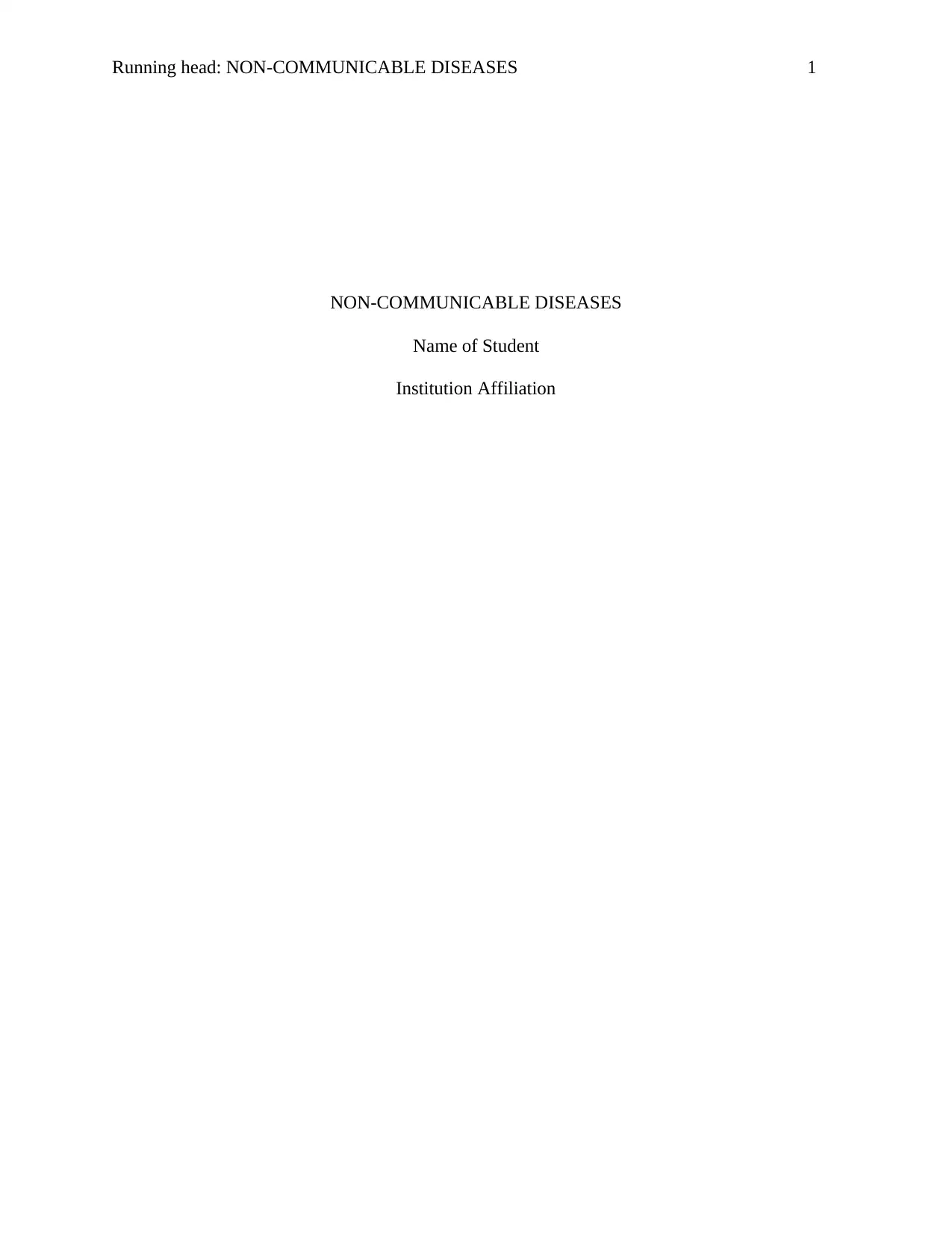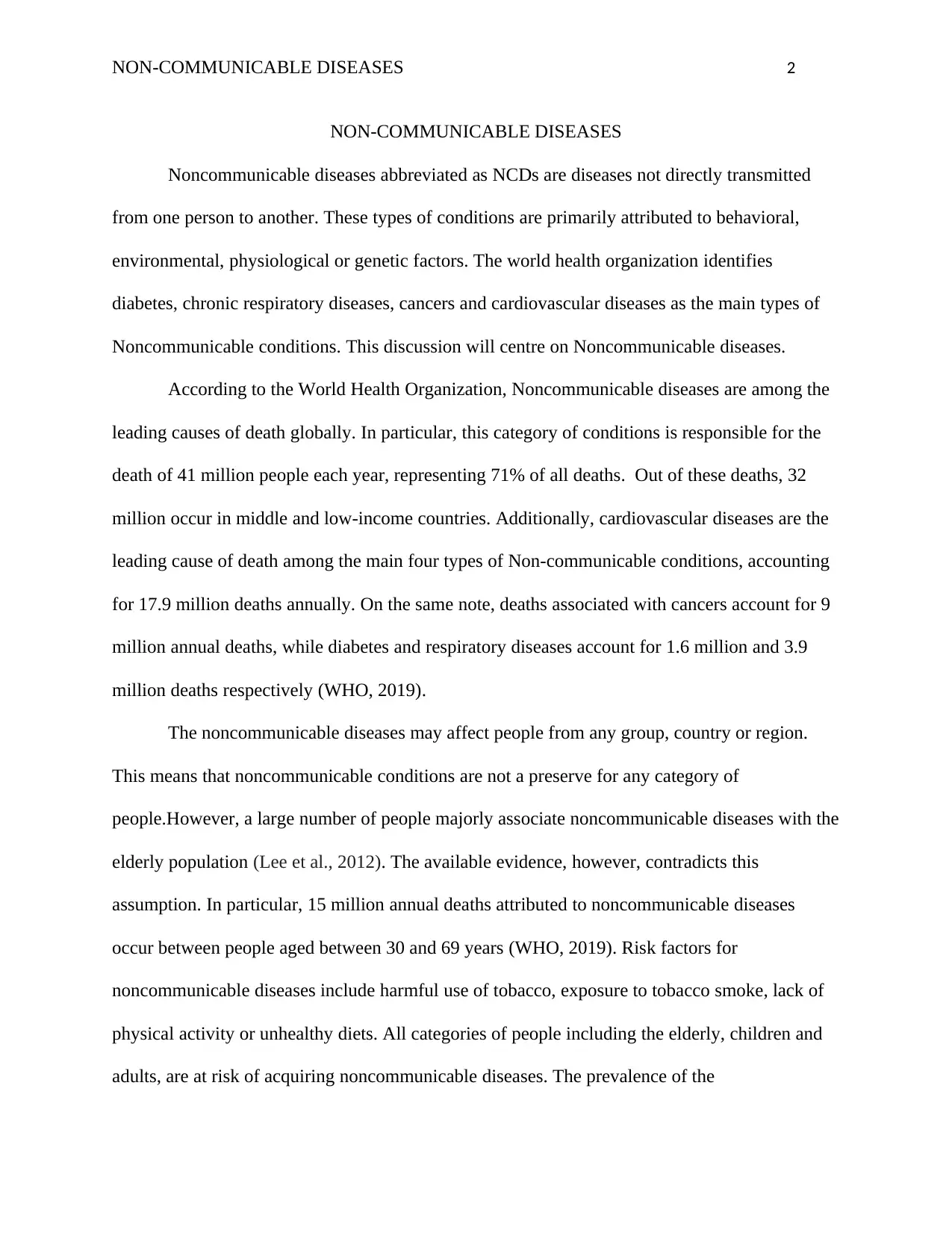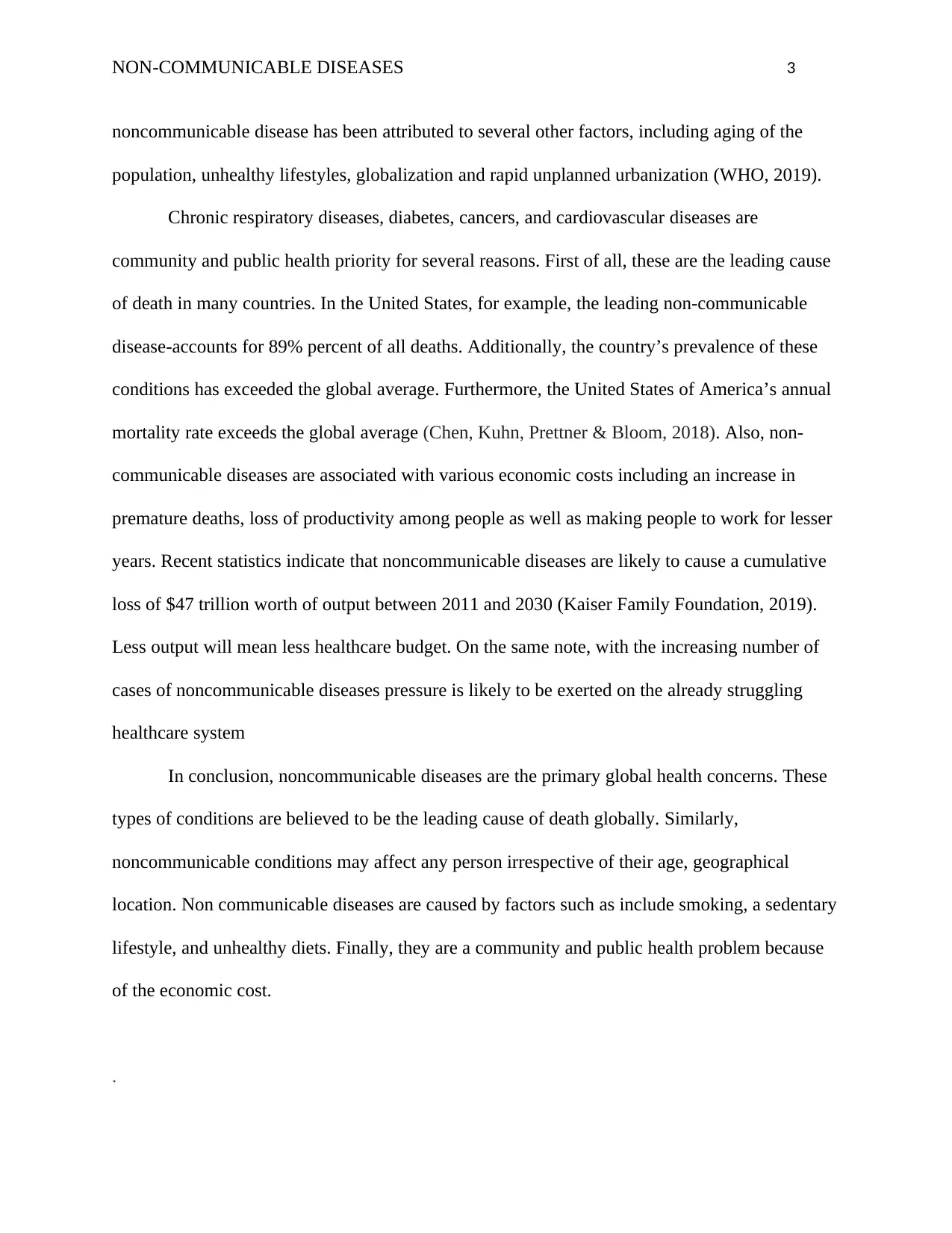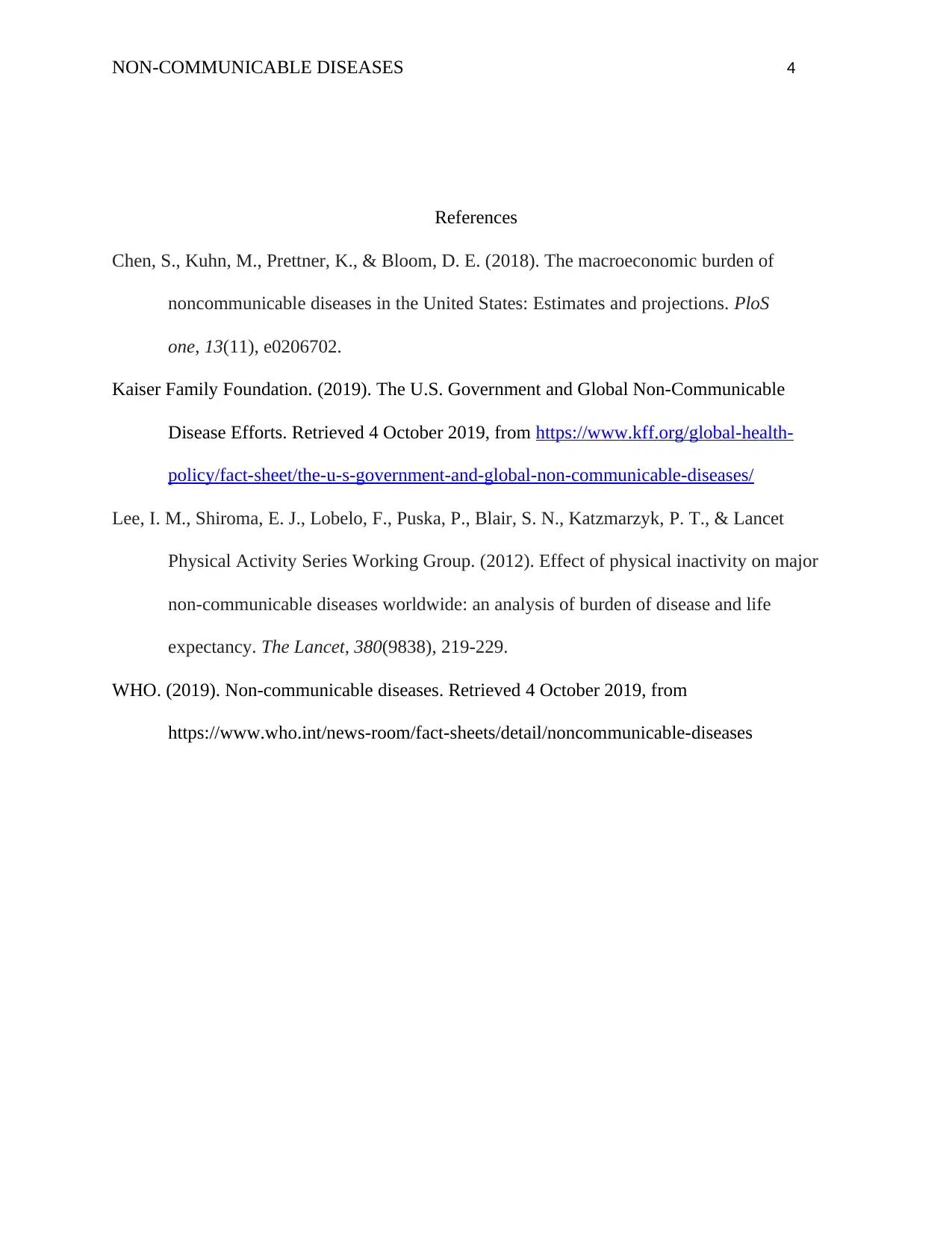Non-Communicable Diseases: Global Health Crisis and Management
VerifiedAdded on 2022/10/01
|4
|805
|456
Essay
AI Summary
This essay provides an overview of non-communicable diseases (NCDs), defining them as conditions not directly transmitted from person to person, primarily attributed to behavioral, environmental, physiological, or genetic factors. The essay highlights the World Health Organization's identification of cardiovascular diseases, cancers, diabetes, and chronic respiratory diseases as the main NCDs. It emphasizes their significant global impact, causing 41 million deaths annually, with a majority in low and middle-income countries. The essay discusses risk factors like tobacco use, lack of physical activity, and unhealthy diets, while also addressing the economic burden associated with NCDs, including increased healthcare costs and reduced productivity. The conclusion emphasizes the importance of addressing NCDs as a primary global health concern, emphasizing their causes and the need for effective interventions.
1 out of 4











![[object Object]](/_next/static/media/star-bottom.7253800d.svg)